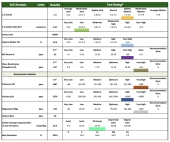Dr Redhawk is not going to self-promote, so allow me.
He has a compendium of free knowledge on here that will blast your soil into excellence.
Epic Soil Thread
Rather than link to all the topics which he has written up, someone (thanks!!!) has embedded them in links under the wiki! Such a time saver!!!
I am subscribed to pretty much all of them (you can subscribe while reading the thread), that way you get little nuggets on these topics rather than a massive eruption. Of course the first time you go through them it is an IMMENSE amount to ingest. But if you read this stuff, you will literally be better educated on these issues than your cooperative extension (who are probably paper certified in it), and be able to form a plan.
Then you can tell us about your plan! And get input and post pictures and we will celebrate your awesome productivity. And then you will be mentoring the next batch.
My learning curve is based on the posts here (80%), a couple books that I refer to like
Holistic Orchard (affiliate link) and
this ebook from Living Energy Farm. The rest is videos like Permaculture Orchard and little tidbits from YouTube and other places.
I have an even worse starting point, and I did all the "right" things like you did. I experienced high mortality. Like nearly 80% in some plantings.
I went back to the drawing board, and made a list of the likely culprits:
Minerals (because I can measure those and I am steeped in lab culture being the "answer")
Soil microbes (which I don't have the expertise to assess-yet!)
Pathogens which are either a sign of a deficiency of the above or poor selection of plant types
Soil tilth is often misrepresented as needing to be perfect. I highly doubt trees are that darn picky, they have tools if they have buddies and resources.
And I set out fixing the minerals and devising a way of working toward the biome.
Look at your resources and devise a plan something like that, it will organize your thinking. The Dr Redhawk threads are helpful once you have a starting framework. Let us know if you are stuck.










 2
2





















































